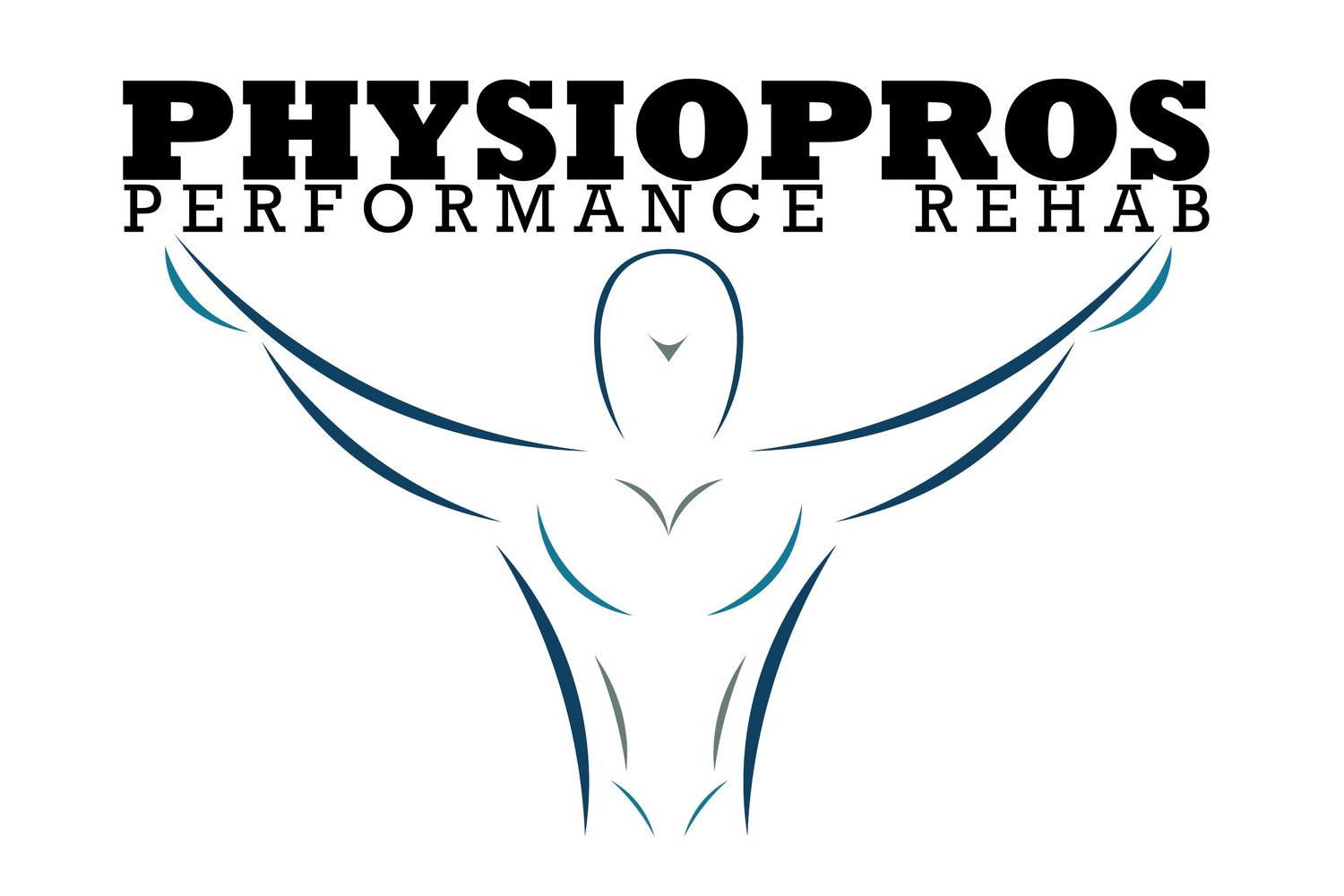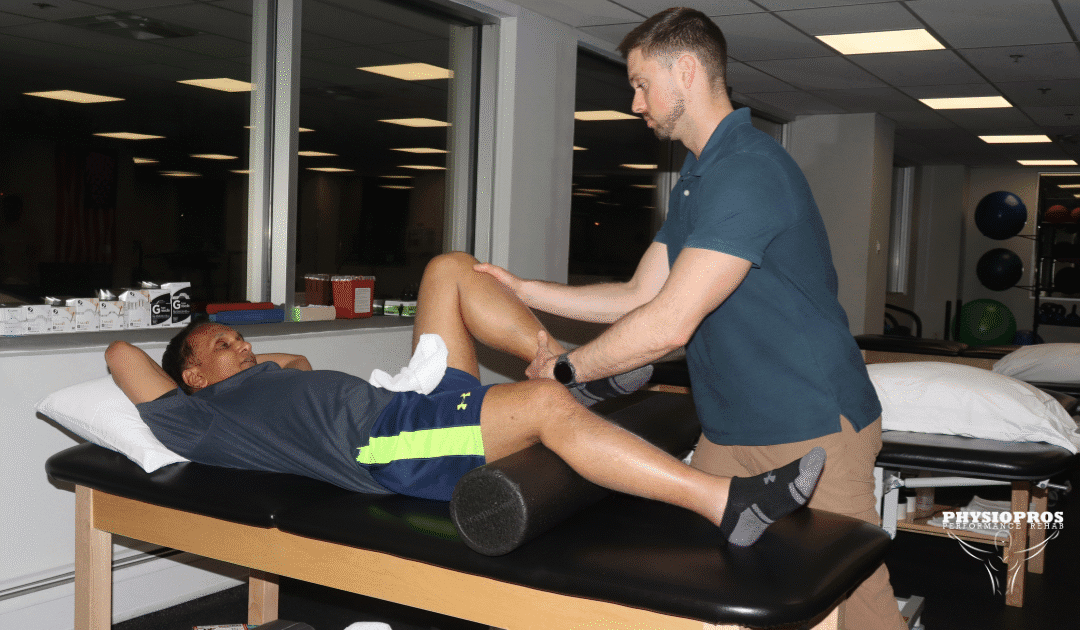The Role of Physical Therapy in Restoring Knee Range of Motion.
Ever wince when you bend your knee or struggle to climb a flight of stairs? Limited knee range of motion can turn everyday tasks into painful challenges. At Physiopros Performance Rehab in Parsippany, NJ, we understand how vital knee mobility is for staying active and independent. That’s why our expert therapists design personalized plans to restore your knee’s full flexion and extension—helping you walk, squat, and enjoy life with confidence.
First, we assess your current movement using precise measurements and then combine hands-on techniques with targeted exercises. Next, we guide you through proven stretches and strength drills—both in our clinic and at home—to break up stiffness and rebuild flexibility. Finally, we track your progress every step of the way, so you can see real improvements in weeks, not months.
Ready to regain smooth, pain-free movement? Keep reading to learn how physical therapy at Physiopros Performance Rehab can restore your knee range of motion and get you back to doing what you love.
Understanding Knee Range of Motion
Knee range of motion (ROM) refers to how far you can bend (flex) and straighten (extend) your knee joint. In simple terms, it’s the degree to which your lower leg swings toward and away from your thigh.
Flexion: Bending the knee so your heel moves toward your buttocks. Most healthy adults achieve 125–135 degrees of flexion—that’s enough to sit, squat, and climb stairs comfortably.
Extension: Straightening the knee until it locks out. Full extension is 0 degrees, meaning your leg is perfectly straight. Anything above 0 (a slight hyperextension) can be normal, but some conditions limit you to 5–10 degrees short of full extension.
Why do these numbers matter? Well, everyday activities rely on smooth knee movement:
Walking and Stair Climbing: Insufficient flexion can make each step feel awkward, while limited extension can shorten your stride.
Squatting and Sitting: Reduced ROM forces you to compensate with your hips or lower back, which may lead to pain elsewhere.
Sports and Hobbies: Whether you love gardening, pickleball, or dancing, your knee’s flexibility directly impacts performance and safety.
By understanding your baseline ROM and aiming for those standard values—125° flexion and 0° extension—you’ll know exactly where to focus your therapy. Next, we’ll dive into the common reasons knee mobility gets restricted and how physical therapy tackles each one.
Common Causes of Limited Knee Range of Motion
Before jumping into exercises, it helps to know why your knee might feel stiff or stuck. Here are the most frequent culprits:
Post-Surgical Stiffness
After procedures like ACL repairs or knee replacements, scar tissue can form around the joint. Consequently, this buildup limits how much your knee can bend or straighten. Physical therapy breaks up adhesions and encourages gentle movement to restore mobility.Arthritis and Degenerative Changes
Osteoarthritis wears down joint cartilage over time, leading to inflammation, pain, and reduced range of motion. Likewise, rheumatoid arthritis can cause swelling that restricts movement. Targeted exercises and manual therapy ease stiffness and support joint health.Injury-Related Inflammation
Sprains, strains, or meniscus tears often trigger swelling inside and around the knee. This inflammation acts like a tight bandage, preventing full flexion and extension. Through manual techniques and compression strategies, physical therapists help reduce swelling and guide the knee back to its full arc.Muscle Imbalances and Weakness
Tight hamstrings or weak quadriceps can pull your knee off its ideal motion path. For example, underactive quads may fail to control extension, while tight hip flexors can restrict flexion. A balanced strengthening program ensures all muscles work together for smooth, pain-free movement.Sedentary Lifestyle and Joint “Rust”
Simply put, a lack of regular movement can cause your knee to stiffen—just like a hinge that rarely opens. Without frequent flexion and extension, the joint capsule tightens, and lubrication decreases. Incorporating gentle ROM drills into daily life keeps your knee “oiled” and flexible.
Understanding these underlying issues lets your therapist at Physiopros Performance Rehab in Parsippany, NJ, tailor a treatment plan that addresses your specific limitations. In the next section, we’ll explore exactly how physical therapy tackles each of these challenges to bring your knee back to full, pain-free motion.
How Physical Therapy Helps
Physical therapy offers a comprehensive approach to restoring knee range of motion by combining hands-on techniques, targeted exercises, and ongoing monitoring. Here’s what you can expect at Physiopros Performance Rehab in Parsippany, NJ:
Assessment
Movement Analysis: Your therapist observes how you walk, squat, and perform basic tasks to identify compensations or weaknesses.
Strength Testing: Evaluating surrounding muscles—like quadriceps, hamstrings, and hip stabilizers—helps us pinpoint imbalances that affect your knee’s mechanics.
Manual Therapy
Joint Mobilizations: Gentle glides and oscillations applied to your knee joint help break up scar tissue and improve glide between bones.
Soft-Tissue Work: Techniques like massage, myofascial release, and instrument-assisted scraping (IASTM) reduce tightness in muscles and connective tissue.
Stretching Assistance: Your therapist will guide your leg through passive stretches to gradually increase flexibility without overworking your muscles.
Therapeutic Exercises
Passive & Active-Assisted ROM Drills: Early in recovery, we help move your knee for you (passive) or guide it while you assist (active-assisted) to safely increase motion.
Strengthening Movements: Once ROM improves, we introduce exercises—such as heel slides, wall squats, and step-ups—to build muscle support around the joint.
Balance & Proprioception Training: Activities like single-leg stands or wobble-board drills retrain your body to sense joint position, reducing the risk of future injury.
Advanced Modalities for Pain & Tissue Prep
Dry Needling: Fine, sterile needles are inserted into tight muscle bands (trigger points) around the knee to release tension, improve blood flow, and reduce pain that can limit motion.
Cupping Therapy: Strategically placed suction cups lift the skin and underlying fascia, enhancing circulation and loosening adhesions around the knee joint—making subsequent stretching and mobilizations more effective.
Progress Tracking & Education
Regular Re-Assessments: We re-measure your knee’s ROM every few sessions so you can see tangible gains.
Goal Setting: Together, we establish realistic milestones—like reaching 120° of flexion—so you can stay motivated and focused on recovery.
Through this blend of hands-on care, exercise science, and patient education, physical therapy at Physiopros Performance Rehab delivers measurable improvements in knee range of motion—getting you back to walking, climbing stairs, and enjoying life without limitations.
Home Exercises to Supplement Therapy
Practicing these simple exercises between sessions accelerates your progress and maintains the gains you make in the clinic.
Heel Slides
Lie on your back with legs extended.
Slowly slide one heel toward your buttocks, bending the knee while keeping your foot on the floor.
Return to the start, then switch legs.
Quad Sets
Sit or lie with your leg extended.
Tighten the muscle on the top of your thigh (quadriceps) by pressing the back of your knee into the floor or table.
Hold the contraction for 5 seconds, then relax.
Standing Hamstring Curls
Stand behind a chair or next to a counter for support.
Bend one knee, bringing your heel toward your buttocks.
Lower slowly, keeping your hips level.
Repeat on the other leg.
Calf Stretch on a Step
Stand on a step with the balls of your feet on the edge and heels hanging off.
Hold onto a railing or wall for balance.
Lower your heels down until you feel a stretch in your calves and behind your knee.
Hold, then lift heels back up.
Seated Knee Extensions
Sit in a chair with feet flat on the ground.
Slowly straighten one knee until your leg is parallel to the floor, engaging your quadriceps.
Hold for 1–2 seconds, then lower back down.
Repeat on the opposite side.
By staying consistent with these home exercises—and tracking your daily efforts—you’ll see steady improvements in your knee range of motion, helping you walk, climb, and move more freely each day.
In Conclusion
Through personalized assessment, hands-on techniques like joint mobilizations and dry needling, and a tailored exercise program, Physiopros Performance Rehab in Parsippany, New Jersey, guides you every step of the way.Whether you’re recovering from surgery, managing arthritis, or simply feeling the effects of stiffness, our expert team is here to help you:
- Break down scar tissue and reduce inflammation
- Rebuild strength in key muscle groups
- Enhance flexibility and joint glide
- Track progress with measurable goals
Don’t let limited knee mobility hold you back. Contact us today to schedule your comprehensive evaluation and take the first step toward smooth, pain-free movement. Your knees—and your active lifestyle—will thank you! Call us at (973) 265-8621, our experienced therapists are dedicated to helping you stay healthy, strong, and mobile. Finally, be sure to follow us on our social media accounts here: Instagram, Facebook, and TikTok.
FAQ
Q: How long does it take to restore knee range of motion?
A: Most patients see noticeable improvements within 4–8 weeks of consistent physical therapy and home exercises. Individual timelines depend on factors like surgery type, age, and initial stiffness.
Q: Is physical therapy painful?
A: You may experience mild discomfort during manual mobilizations or stretching, but your therapist will always work within your comfort limits. Any pain should be short-lived and followed by relief.
Q: Can I do these exercises on my own?
A: Yes—home exercises are a vital part of your recovery. We provide clear instructions and videos so you can safely perform movements between sessions.
Q: Will my insurance cover knee physical therapy?
A: Most insurance plans cover medically necessary physical therapy. Our team will help verify your benefits and answer any billing questions before you begin.
Q: What if I hit a plateau in my progress?
A: Plateaus are common. Your therapist will reassess, tweak your program—possibly adding new exercises or modalities like cupping—and set fresh, attainable goals to keep you moving forward.

